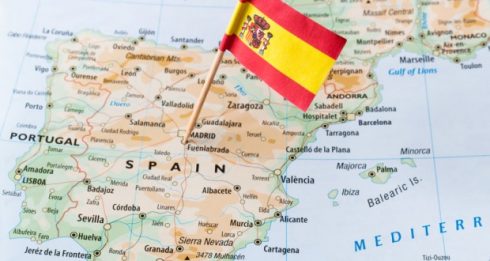 Roman and Celtoiberian settlement threatened by development plans
Roman and Celtoiberian settlement threatened by development plans
IT was the scene of a great and bloody battle. In 134 AD, brave Celtoiberian warriors battled for 11 months to fight off the advancing hordes of Roman invaders.
Today, Numancia in northern Spain is once again under siege. But it is not General Publius Cornelius Scipio who is leading the march on this ancient settlement. This time it is the housing developers.
If plans passed by the regional government go ahead, an 800-home complex with a hotel, horse riding school, office blocks and industrial estate will be built on land overlooking the 2,000-year-old site.
And in a move that opponents claim is illegal, the Junta de Castilla y Leon has also passed plans for another 300 houses and business park nearby on the privately-owned Muela hill.

This is where Scipio the Younger – grandson of Scipio the Elder, Hannibal’s Roman victor – made one of his base camps during the second-century battle, which saw 60,000 centurions surround and eventually take Numancia from its small band of Celtoiberian inhabitants.
“This must be the only case in Europe in which the owner of a plot of land is demanding it remains classified as green belt. We do not want any construction here,” said Amalio Marichalar, whose family looks set to lose Muela hill after local officials in nearby Soria announced plans to ‘grab’ the land to aid the Junta’s 35-million-euro project.
Opponents, which include local residents, the Royal History Academy and Spain’s Open University (UNED), are now calling on central government to halt the developments.
Citing the Spanish Constitution, they claim Numancia is protected under the 1974 Magna Carta, which states public administrations should guarantee to preserve and promote the natural, historical and cultural heritage of Spain.
“This is an unjustified, barbaric attack on not only the landscape of Soria but the heritage of our country,” María José Perex of the ancient history department at UNED said.
She added that an online petition is underway to demand the United Nations, which has also expressed concern at the development, to declare the settlement a World Heritage Site.
This classification would protect the site against such develoment plans.
Supporters of the plans claim the developments will create much needed employment and stop migration from the area. “Our children leave Soria at 18 and go to Madrid and Barcelona to find work. We need something like this to keep this area alive,” said Soria mayor, Juan Manuel Izquierdo.
To sign the online petition, go to: www.salvemosnumancia.com









Hi friends. The newspaper are so good. Congratulations. Send to my e-mail alerts ,news and other interest articles you post.Have a nice day.God bless.
The Olive Press is an exceptionally good English newspaper in Spain. In fact you are indispensable in the Spanish democratic process.
The article ‘Veni, Vidi, Construxi’ once again shows your talents to expose the spanish authorities.
Hola
Great article and thank you for highlighting this issue.
I would also like to add that Rome had decided to destroy the hub of the Celtiberians and chose to take the hill stronghold of Numancia as it was one of the most important settlements at the time, 8.000 Celtiberians lived here, and it was a well defend town. The Romans first sent the consul Quinto Flavio in 153 BC and he was defeated, the Numancians repelled every Roman attack for the next 20 years. When Scipio finally took the Celtiberian settlement in 134 BC, it would be the beginning of Roman domination of the Iberian peninsular. Numancia has become the symbol of the people of Soria and for those who struggle for freedom. It is true that Soria is one of the least populated places in Europe, so understandably the local government will want to promote the province by attracting business and creating employment. However there is plenty of space in the province to build a 35 million euro development and besides what about promoting its beautiful Historic sites, nature parks and rural tourism to attract more visitors.
Lest hope they are not planning on building a development overlooking the Medieval village of Calatañazor in Soria. This is where the great Moorish leader Almanzor lost the battle with the Christian armies in 1002 AD, a defining moment in the Reconqista.
I live in Soria and see it as one of the last few unspoilt regions of Spain, hopefully governments will learn from past mistakes and keep it this way.